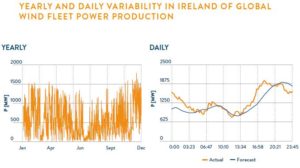In 2015 a record US$286 billion was invested in 154GW of new renewables capacity (76% in wind and PV), by far overtaking the investment in conventional generation to which 97GW were added.
A new report, ‘Variable Renewables Integration in Electricity Systems 2016 - How to get it right’, published by the World Energy Council in partnership with CESI S.p.A, draws upon 32 country case studies, representing about 90% of installed wind and solar capacity worldwide.
The report launched on 20 September, is part of the build up to the 23rd World Energy Congress being held in Istanbul next month between 10- 13 October. The topic of renewables in the global energy mix and how they will help accelerate the transition to a low carbon economy is one of the key issues on the first day of the Congress.
“We are beyond the tipping point of grand energy transition. Implementing technically and economically sound, stable policies supported by clear carbon price signals will enable this transition and take us a step closer to meeting the climate aspirations agreed at COP21.”
Key recommendations to address the challenge of sustainable variable renewables integration include:
-
Policymakers must define market rules to ensure a more sustainable energy system in line with the objectives of the Trilemma, including clearly defined CO2 emissions regulations.
-
Introducing capacity markets can help ensure security of supply, as energy-only based markets are often insufficient to guarantee reliable supply in systems with a large share of variable renewables.
-
Weather forecasting methodologies need further development to achieve better accuracy and to rapidly manage the changing nature of wind and sun/variability.






